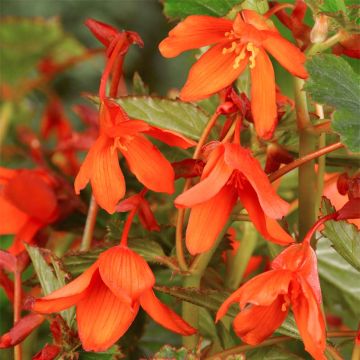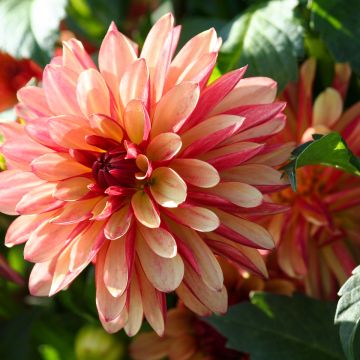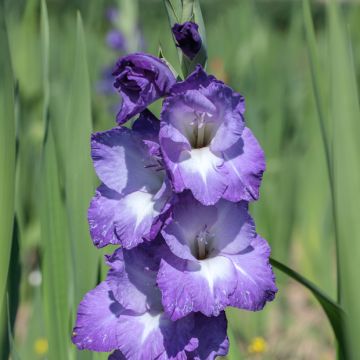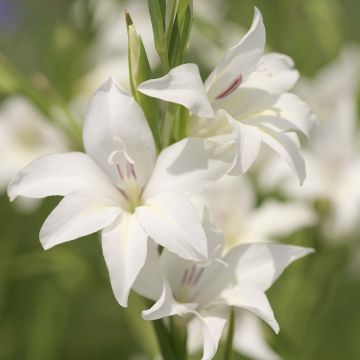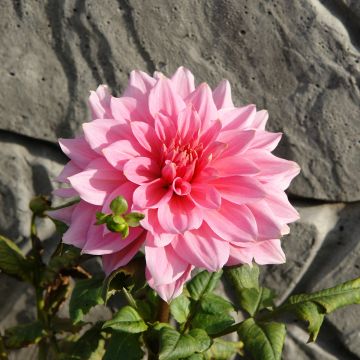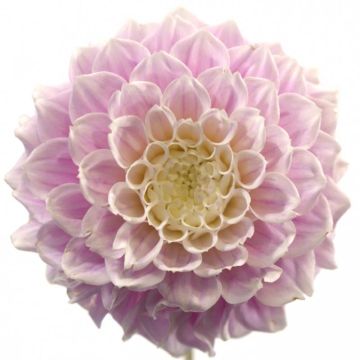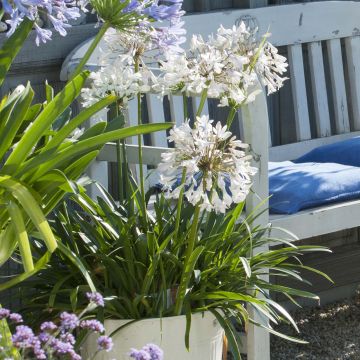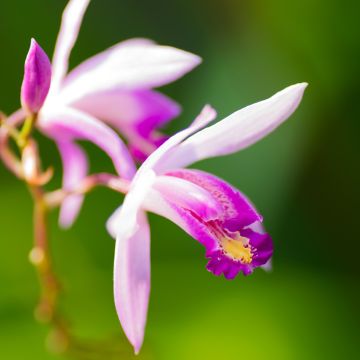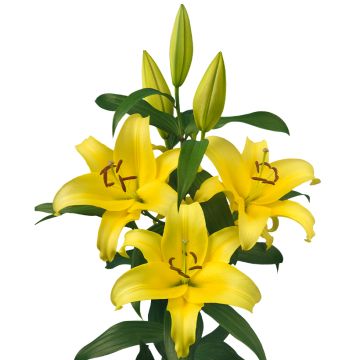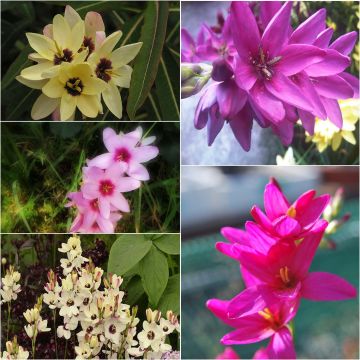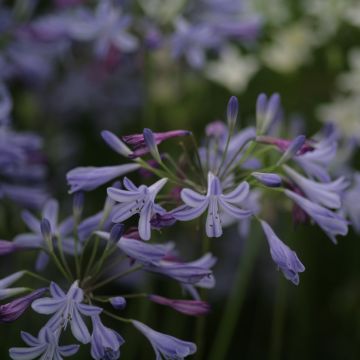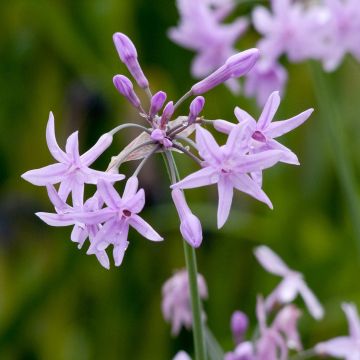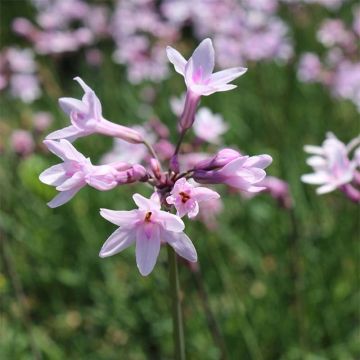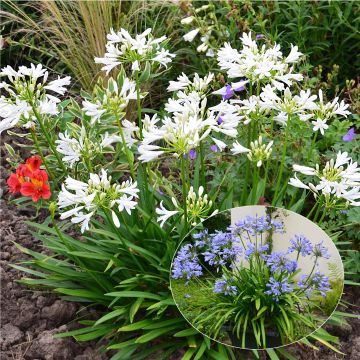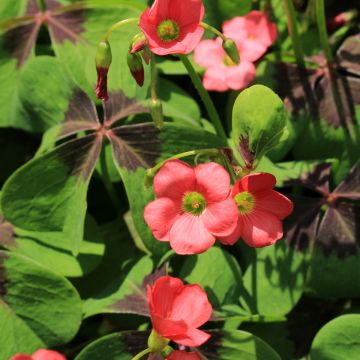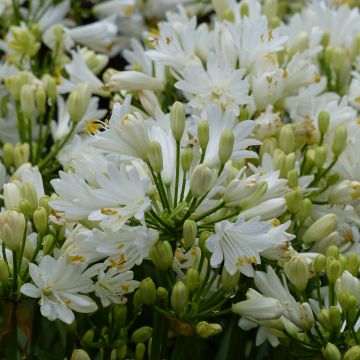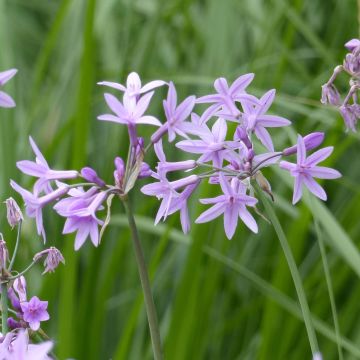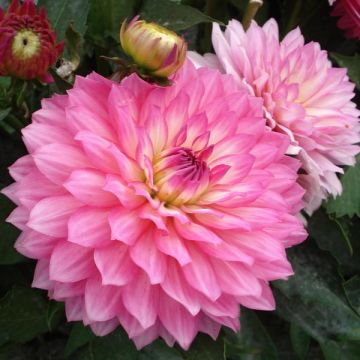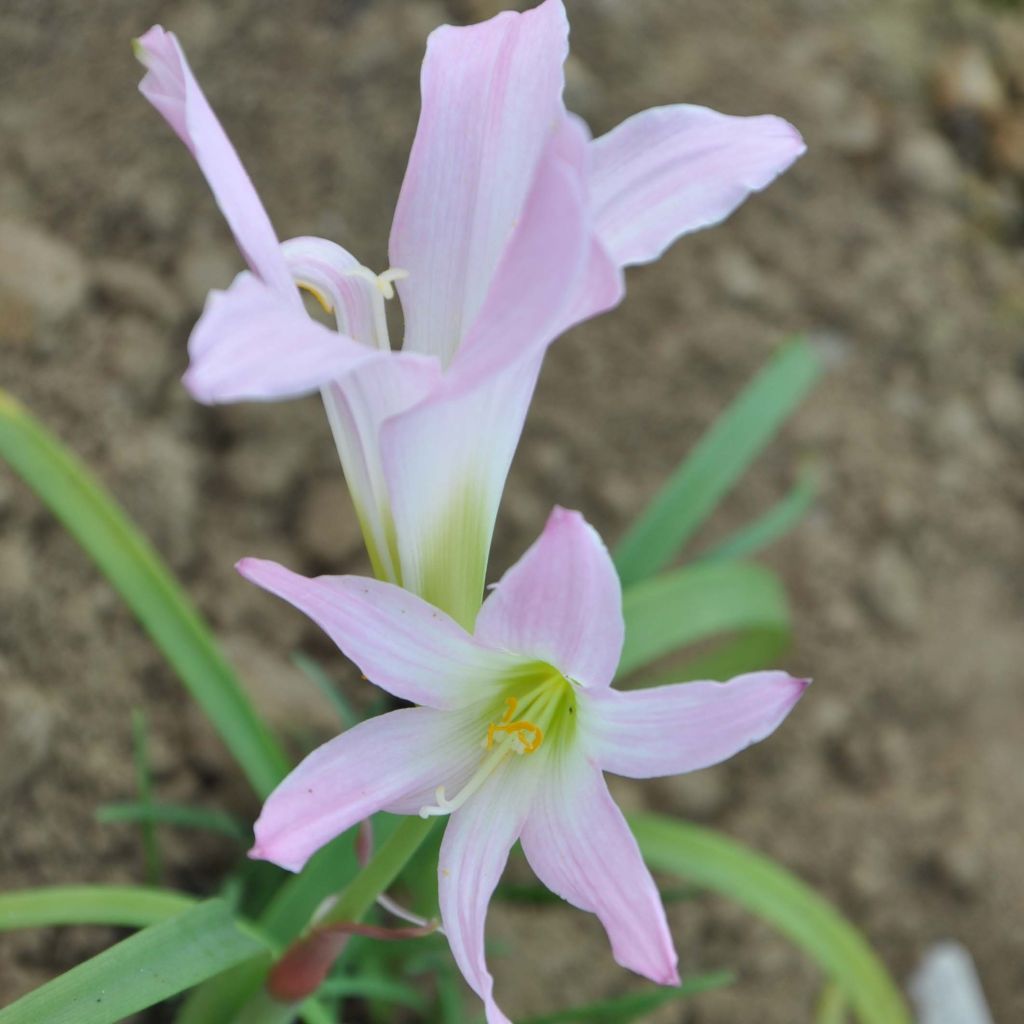

Habranthus robustus - Argentine rain lily
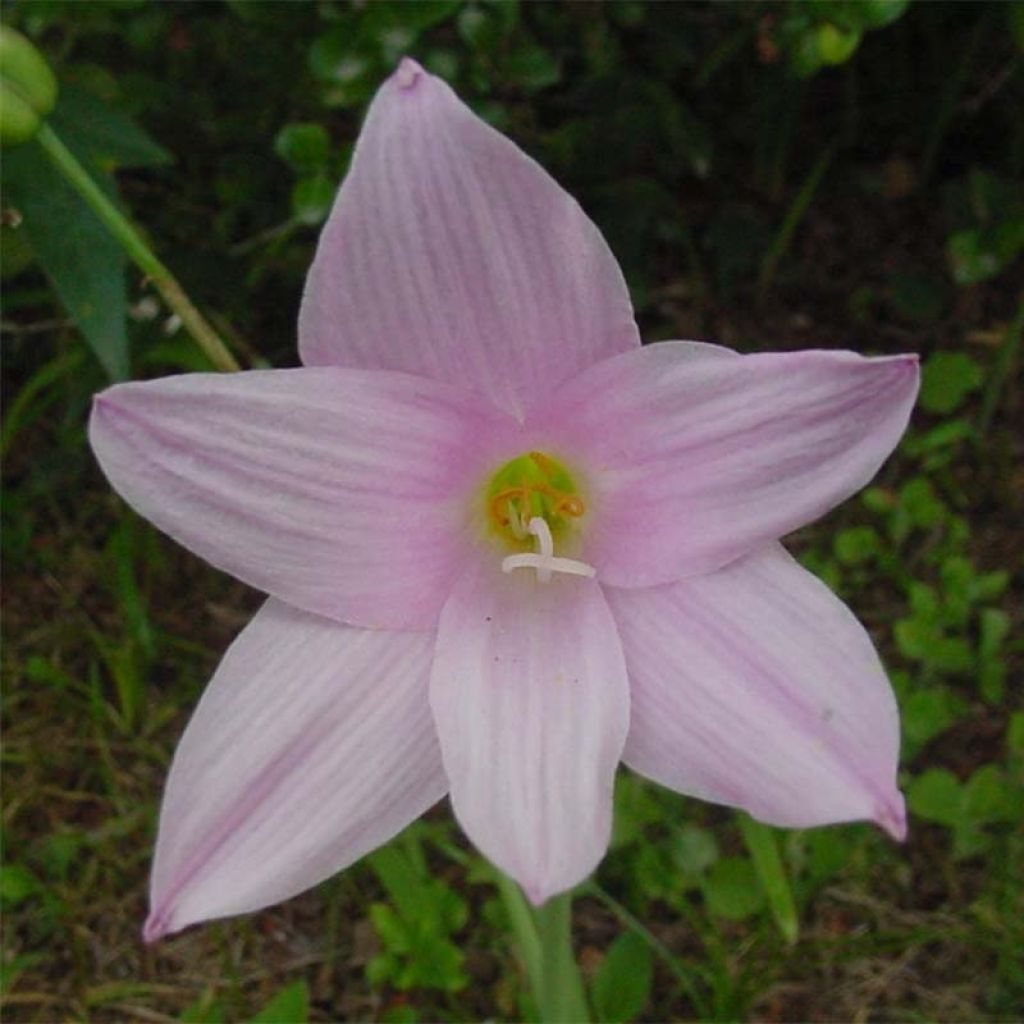

Habranthus robustus - Argentine rain lily
Habranthus robustus - Argentine rain lily
Habranthus robustus
Brazilian Copperlily, Pink Fairy Lily, Argentine rain lily
Beautiful blooming
Laura, 01/09/2022
This item cannot be shipped to the selected country
Delivery charge from €5.90
More information
Schedule delivery date,
and select date in basket
This plant carries a 6 months recovery warranty
More information
We guarantee the quality of our plants for a full growing cycle, and will replace at our expense any plant that fails to recover under normal climatic and planting conditions.
From €5.90 for pickup delivery and €6.90 for home delivery
Express home delivery from €8.90.

Does this plant fit my garden?
Set up your Plantfit profile →
Description
Habranthus robustus is a relatively unknown, tender South American bulb that rare plant enthusiasts will love for its beautiful pink summer flowering, resembling a small amaryllis borne on a short stem. The robust habranthus perishes below -5°C so should be grown in pots outside of sheltered coastal gardens, as it requires fairly humid summers. The pot can be stored indoors during winter in a greenhouse, a conservatory, or a winter garden to protect it from frost. It will spend the summer on the balcony or terrace.
Habranthus robustus belongs to the Amaryllidaceae family. This botanical species is native to the south of Brazil and Argentina, and it is also found in Mexico and the southern United States in the warmest areas, but well-watered in summer. It is a herbaceous plant with a perennial bulb. The foliage consists of a clump of fine ribbon-like, dark green leaves, approximately 20 cm (8in) long. Although usually deciduous, it will persist in part during winter if the plant is grown indoors. Flowering occurs from July to September depending on the climate, and lasts about 2 months. It takes the form of flower stems measuring 20 to 30 cm (8 to 12in) high, each bearing a solitary flower at its tip. Initially resembling a large soft pink crocus, this flower opens widely into a funnel shape, 6 cm (2in) in diameter, revealing a throat of a deeper pink and a centre of yellow stamens.
When planted in groups, Habranthus robustus creates a charming effect throughout summer. In favourable climates, you can plant it along the edge of a flowerbed or pathway amidst low-growing perennial plants such as compact perennial geraniums and small carnations, for example. This bulb will also thrive in a sunny rockery that remains moist in summer. Add a touch of exoticism to your balcony or terrace by creating beautiful pots that you can bring indoors for protection in winter, either in a conservatory or in a bright but poorly heated room.
Report an error about the product description
Habranthus robustus - Argentine rain lily in pictures
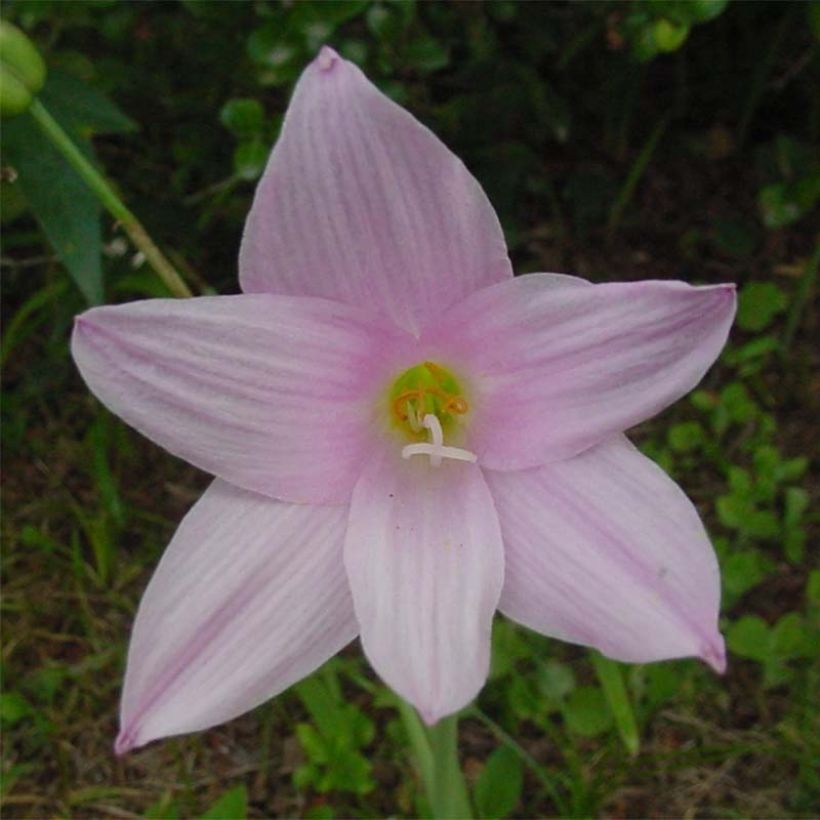

Plant habit
Flowering
Foliage
Botanical data
Habranthus
robustus
Amaryllidaceae
Brazilian Copperlily, Pink Fairy Lily, Argentine rain lily
South America
Other Summer bulbs A to Z
Planting and care
Plant your Habranthus robustus in a sunny location, in light, well-drained soil, rich in humus, that remains moist in summer. Plant after the last frost, either in the ground or in a pot. In a pot, use a mixture composed of two-thirds quality potting soil and one-third coarse sand. In the ground, place a handful of coarse sand at the bottom of the planting hole to aid drainage. In the ground, space the bulbs 10 to 15 cm (4 to 6in) apart. In a pot, 5 cm (2in) spacing between bulbs is sufficient. Place the bulb about 10 cm (4in) deep.
Overwinter potted plants in a frost-free veranda, greenhouse, or in a bright but cool room. Keep the substrate slightly moist.
Since the bulbs are susceptible to frost (they perish below -5°C (23°F)), they can only remain in the ground during winter in the most sheltered coastal gardens, with a good layer of mulch to protect them. They should never lack water in summer.
Planting period
Intended location
Care
-
, onOrder confirmed
Reply from on Promesse de fleurs
Bulbs to grow in pots
Haven't found what you were looking for?
Hardiness is the lowest winter temperature a plant can endure without suffering serious damage or even dying. However, hardiness is affected by location (a sheltered area, such as a patio), protection (winter cover) and soil type (hardiness is improved by well-drained soil).

Photo Sharing Terms & Conditions
In order to encourage gardeners to interact and share their experiences, Promesse de fleurs offers various media enabling content to be uploaded onto its Site - in particular via the ‘Photo sharing’ module.
The User agrees to refrain from:
- Posting any content that is illegal, prejudicial, insulting, racist, inciteful to hatred, revisionist, contrary to public decency, that infringes on privacy or on the privacy rights of third parties, in particular the publicity rights of persons and goods, intellectual property rights, or the right to privacy.
- Submitting content on behalf of a third party;
- Impersonate the identity of a third party and/or publish any personal information about a third party;
In general, the User undertakes to refrain from any unethical behaviour.
All Content (in particular text, comments, files, images, photos, videos, creative works, etc.), which may be subject to property or intellectual property rights, image or other private rights, shall remain the property of the User, subject to the limited rights granted by the terms of the licence granted by Promesse de fleurs as stated below. Users are at liberty to publish or not to publish such Content on the Site, notably via the ‘Photo Sharing’ facility, and accept that this Content shall be made public and freely accessible, notably on the Internet.
Users further acknowledge, undertake to have ,and guarantee that they hold all necessary rights and permissions to publish such material on the Site, in particular with regard to the legislation in force pertaining to any privacy, property, intellectual property, image, or contractual rights, or rights of any other nature. By publishing such Content on the Site, Users acknowledge accepting full liability as publishers of the Content within the meaning of the law, and grant Promesse de fleurs, free of charge, an inclusive, worldwide licence for the said Content for the entire duration of its publication, including all reproduction, representation, up/downloading, displaying, performing, transmission, and storage rights.
Users also grant permission for their name to be linked to the Content and accept that this link may not always be made available.
By engaging in posting material, Users consent to their Content becoming automatically accessible on the Internet, in particular on other sites and/or blogs and/or web pages of the Promesse de fleurs site, including in particular social pages and the Promesse de fleurs catalogue.
Users may secure the removal of entrusted content free of charge by issuing a simple request via our contact form.
The flowering period indicated on our website applies to countries and regions located in USDA zone 8 (France, the United Kingdom, Ireland, the Netherlands, etc.)
It will vary according to where you live:
- In zones 9 to 10 (Italy, Spain, Greece, etc.), flowering will occur about 2 to 4 weeks earlier.
- In zones 6 to 7 (Germany, Poland, Slovenia, and lower mountainous regions), flowering will be delayed by 2 to 3 weeks.
- In zone 5 (Central Europe, Scandinavia), blooming will be delayed by 3 to 5 weeks.
In temperate climates, pruning of spring-flowering shrubs (forsythia, spireas, etc.) should be done just after flowering.
Pruning of summer-flowering shrubs (Indian Lilac, Perovskia, etc.) can be done in winter or spring.
In cold regions as well as with frost-sensitive plants, avoid pruning too early when severe frosts may still occur.
The planting period indicated on our website applies to countries and regions located in USDA zone 8 (France, United Kingdom, Ireland, Netherlands).
It will vary according to where you live:
- In Mediterranean zones (Marseille, Madrid, Milan, etc.), autumn and winter are the best planting periods.
- In continental zones (Strasbourg, Munich, Vienna, etc.), delay planting by 2 to 3 weeks in spring and bring it forward by 2 to 4 weeks in autumn.
- In mountainous regions (the Alps, Pyrenees, Carpathians, etc.), it is best to plant in late spring (May-June) or late summer (August-September).
The harvesting period indicated on our website applies to countries and regions in USDA zone 8 (France, England, Ireland, the Netherlands).
In colder areas (Scandinavia, Poland, Austria...) fruit and vegetable harvests are likely to be delayed by 3-4 weeks.
In warmer areas (Italy, Spain, Greece, etc.), harvesting will probably take place earlier, depending on weather conditions.
The sowing periods indicated on our website apply to countries and regions within USDA Zone 8 (France, UK, Ireland, Netherlands).
In colder areas (Scandinavia, Poland, Austria...), delay any outdoor sowing by 3-4 weeks, or sow under glass.
In warmer climes (Italy, Spain, Greece, etc.), bring outdoor sowing forward by a few weeks.

































